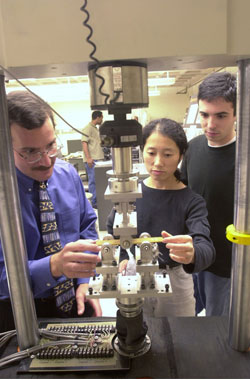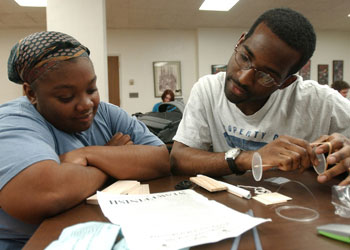Professor Shikha Nangia Named as the Milton and Ann Stevenson Endowed Professor of Biomedical and Chemical Engineering
The College of Engineering and Computer Science (ECS) has announced the appointment of Shikha Nangia as the Milton and Ann Stevenson Endowed Professor of Biomedical and Chemical Engineering. Made possible by a gift from the late Milton and Ann Stevenson,…


 “Students come into engineering and computer science typically because they are strong in math and science. They have an interest in engineering, but oftentimes they don’t know what engineering is—it’s not a field they are traditionally exposed to in high school,” says
“Students come into engineering and computer science typically because they are strong in math and science. They have an interest in engineering, but oftentimes they don’t know what engineering is—it’s not a field they are traditionally exposed to in high school,” says  “Students can enroll in different projects that give them the opportunity to explore different majors and make a more informed decision about the major they select,” Hasenwinkel says. “Also, our faculty members believe engineering is an exciting field to work in and we want to be able to convey that more effectively to students earlier in their careers.”
“Students can enroll in different projects that give them the opportunity to explore different majors and make a more informed decision about the major they select,” Hasenwinkel says. “Also, our faculty members believe engineering is an exciting field to work in and we want to be able to convey that more effectively to students earlier in their careers.”